A credit card security code is a crucial element in protecting your financial information and ensuring secure transactions. By following essential tips on secure card usage, you can fortify your credit card security code and protect yourself against fraud. This article will provide valuable insights into the importance of safeguarding your credit card security code and offer practical advice on how to protect it during online transactions, thus minimizing the risk of fraud.
Key Takeaways:
- Protecting your credit card security code is vital in preventing fraud and ensuring secure transactions.
- Follow secure card usage practices to fortify your credit card security code.
- Safeguard your credit card security code during online transactions to minimize the risk of fraud.
- Be cautious of sharing your credit card security code and only provide it to trusted merchants.
- Regularly monitor your financial statements and report unauthorized transactions promptly.
Understanding the Card Security Code
A card security code, also known as a card verification value (CVV) or card validation code (CVC), is a crucial element in authenticating transactions where the card is not physically present. It is a 3- or 4-digit number that helps prevent fraudulent activity, especially in online purchases.
The card security code differs among card networks, but its purpose remains the same – to verify the cardholder’s identity and minimize the risk of unauthorized transactions.
Visa, Mastercard, and Discover cards typically feature the card security code on the back of the card. On the other hand, American Express cards have it printed on the front, making it more convenient for cardholders to locate and use during online transactions.
Understanding the purpose and location of the card security code is essential for protecting your credit card information and preventing fraud. By familiarizing yourself with this important security feature, you can confidently engage in secure online transactions.
Let’s dive deeper into the significance of the card security code and how it contributes to the protection of your financial data.
The Role of Card Security Codes in Online Transactions
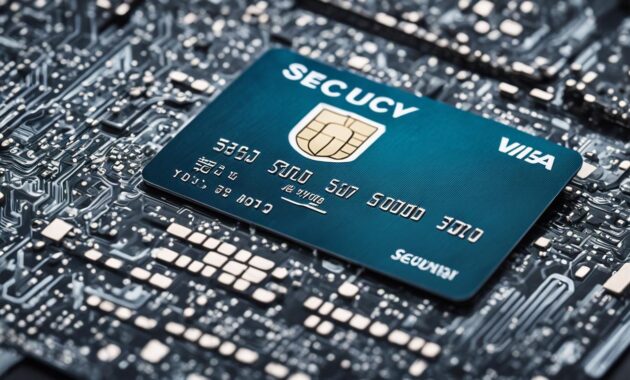
In today’s digital age, online transactions have become increasingly common. From purchasing goods and services to making bill payments, people rely on the convenience of card-not-present transactions. However, with the absence of physical card verification, the risk of fraudulent activity is heightened. This is where card security codes play a crucial role.
When conducting online transactions, merchants need a mechanism to authenticate the cardholder and ensure the transaction is authorized. This is where card security codes come into play. By requiring the card security code, merchants add an additional layer of security and authentication, reducing the risk of unauthorized transactions.
The card security code acts as a proof that the cardholder is in possession of the card and is the individual making the purchase. It provides an added level of assurance that the transaction is legitimate and authorized. Without the card security code, it becomes easier for fraudsters to engage in illicit activities, posing a threat to both merchants and consumers.
For merchants, requiring the card security code during online transactions is an essential measure to combat fraud and maintain a secure online purchasing environment. It helps verify the identity of the buyer and significantly reduces the risk of fraudulent activity, protecting both the merchant and the customer.
Similarly, as a cardholder, it is crucial to enter the card security code when prompted during online transactions. By doing so, you play an active role in verifying your identity and protecting yourself from potential fraud. It ensures that only authorized individuals have access to your account and minimizes the risk of unauthorized transactions.
By recognizing and understanding the role of card security codes in online transactions, both merchants and consumers can actively contribute to maintaining a secure online purchasing environment. It is a collective effort that helps safeguard financial information, authenticate transactions, and prevent fraud.
| Role of Card Security Codes in Online Transactions | Benefits |
|---|---|
| Authenticates the cardholder in online transactions | Reduces the risk of unauthorized transactions |
| Provides an additional layer of security | Ensures a secure online purchasing environment |
| Verifies the identity of the buyer | Protects both the merchant and the customer |
Types of Card Security Codes
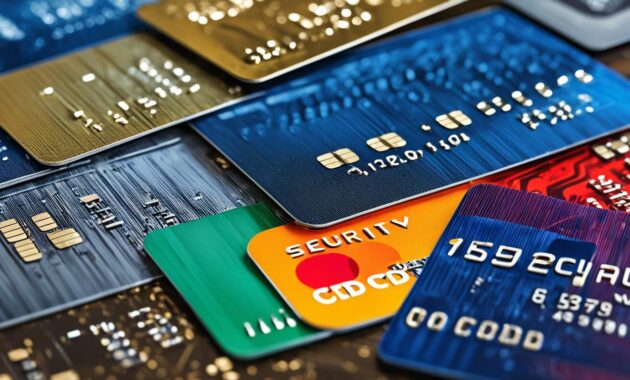
Card security codes play a crucial role in preventing fraud and safeguarding your financial information. Over time, these security codes have evolved to enhance their effectiveness. Let’s explore the different types of card security codes and their variations across card brands.
1. CVC1 and CVV1
The original versions of card security codes were known as CVC1 (Card Verification Code 1) and CVV1 (Card Verification Value 1). These codes were electronically stored on the magnetic stripe of the card. However, they were vulnerable to fraudsters creating accurate duplicates of stolen cards.
2. CVC2 and CVV2
To address the vulnerabilities of CVC1 and CVV1, the industry introduced CVC2 and CVV2. These codes are now printed on the card itself, making it harder for fraudsters to obtain them. CVC2 and CVV2 provide an extra layer of security during card-not-present transactions, such as online purchases.
3. Dynamic Security Codes
In addition to static security codes like CVC2 and CVV2, some card issuers offer dynamic security codes. These codes change regularly and are generated for each transaction. By using dynamic security codes, issuers add an extra layer of protection against fraudulent activities.
4. Card Brand Variations
It’s important to note that the specific name and location of the card security code may vary depending on the card brand. While most Visa, Mastercard, and Discover cards have the security code on the back, American Express cards typically have it printed on the front.
Understanding the different types of card security codes and their variations is essential for protecting your financial information and ensuring secure transactions. By staying informed about these security measures, you can make informed decisions while conducting online or card-not-present transactions.
The Importance of Protecting Your Card Security Code
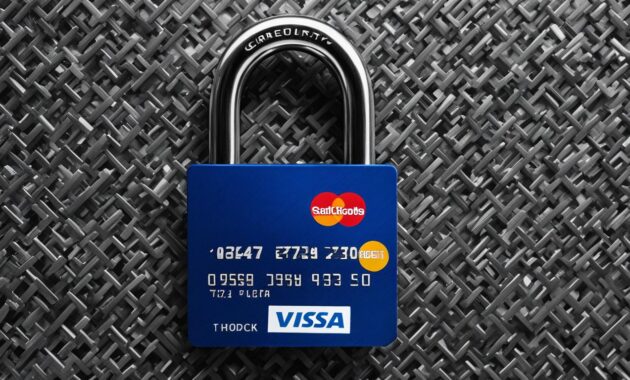
Protecting your card security code is crucial in maintaining the integrity of your transactions and preventing fraud. As the cardholder, it is your responsibility to safeguard this vital piece of information. By following a few simple steps, you can significantly reduce the risk of your card security code falling into the wrong hands.
- Never share your card security code with anyone
- Avoid disclosing your security code over unsolicited calls or suspicious websites
- Be cautious of phishing attacks that impersonate legitimate merchants or representatives
- Exercise caution when entering your card information on unsecured websites
Sharing your card security code can have severe consequences, as fraudsters can use it to make unauthorized transactions. They may attempt to deceive you through various methods, such as phishing attacks, where they impersonate trusted entities to trick you into revealing sensitive information.
“Never share your card security code with anyone, especially through unsolicited calls or suspicious websites.”
Phishing attacks are becoming increasingly sophisticated, often appearing as convincing emails or websites. Always verify the legitimacy of the sender or website before sharing any sensitive information. Remember, reputable merchants and financial institutions will never ask you to provide your security code through email or phone calls.
By prioritizing the protection of your card security code, you play an essential role in fraud prevention. Your diligence and adherence to secure practices can help safeguard your financial well-being and maintain the trust and confidence in online transactions.
Limitations of Card Security Codes
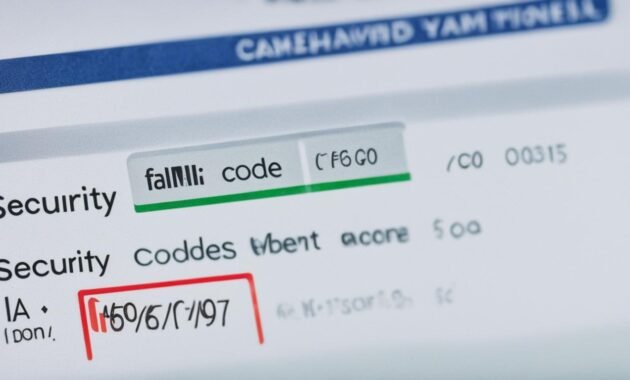
While card security codes add an extra layer of protection, it is vital to understand their limitations. Despite their effectiveness in preventing fraud, card security codes are not foolproof. This section explores some of the key limitations associated with card security codes.
1. Stolen Physical Card
If a fraudster gains access to a physical card, they can easily obtain the card security code. With this information, they can make unauthorized purchases without the cardholder’s knowledge or consent.
2. Unauthorized Purchases
Even if a cardholder diligently safeguards their card security code, there is still a risk of unauthorized purchases. Fraudsters can exploit various techniques to obtain card details, such as phishing scams, malware, or data breaches.
3. Cardholder Disputes
In some cases, a cardholder may dispute a transaction, even if they had knowledge of the card security code. They may claim that they did not authorize the purchase, leading to potential disputes between the cardholder and the merchant.
4. Chargebacks
When cardholders dispute a transaction, it can result in chargebacks. Chargebacks occur when the cardholder requests a refund from their issuing bank, arguing that the transaction was unauthorized or fraudulent. While chargebacks protect consumers, they can be a significant challenge for merchants, leading to potential financial losses.
5. Limitations of Card Security Codes
Despite their role in preventing fraud, card security codes have inherent limitations. Fraudsters constantly adapt their tactics, making it crucial for merchants to adopt a multilayered approach to fraud prevention. Relying solely on card security codes may not provide sufficient protection against advanced fraudulent schemes.
“While card security codes provide an additional layer of protection, they are not foolproof. Merchants should employ a multilayered approach to fraud prevention, combining various tools and methods to mitigate risk.” – Melissa Thompson, Fraud Prevention Expert
Evolving Technologies and Card Security Codes
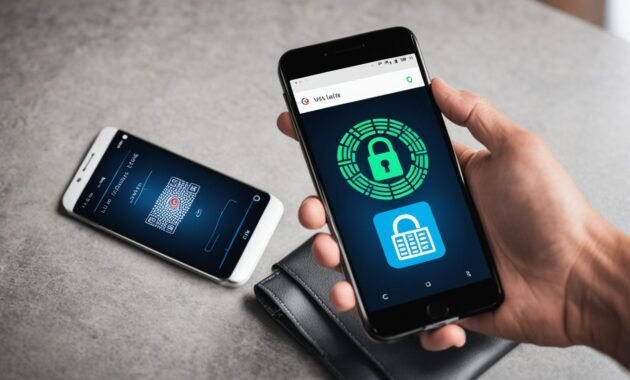
Advancements in technology have brought about new payment methods and innovative security measures. Mobile wallet technology, such as Apple Pay, has revolutionized the way we make transactions by utilizing dynamic security codes generated for each individual transaction. These dynamic codes, also known as cryptograms or CVV3 tokens, offer enhanced security by incorporating real-time verification and location data, reducing the risk of fraud.
Another emerging technology in the realm of card security is tokenization. Tokenization replaces traditional card security codes with unique identifiers, adding an extra layer of protection to transactions. By assigning a unique token to each cardholder, sensitive information is kept secure, further enhancing the overall security of transactions.
While these evolving technologies hold great promise in the fight against fraud, it is important to note that traditional card security codes still play a crucial role in eCommerce fraud prevention. As technology continues to advance, there may come a time when card security codes become obsolete. However, for now, they remain an integral part of the security measures employed by merchants and card issuers.
It is worth mentioning that the integration of mobile wallet technology, dynamic security codes, and tokenization has significantly enhanced the security features available to consumers and merchants alike. These advancements reflect the industry’s commitment to staying ahead of cyber threats and ensuring safe and secure transactions.
Enhancing Security with Mobile Wallet Technology
Mobile wallet technology has revolutionized the way we make payments, offering convenience and enhanced security features. By leveraging dynamic security codes, mobile wallet platforms like Apple Pay generate unique codes for each transaction, making it nearly impossible for fraudsters to misuse them. This real-time generation of dynamic codes adds an extra layer of security, ensuring that even if the code is intercepted, it will be useless for future unauthorized transactions.
Furthermore, mobile wallet technology often incorporates biometric authentication, such as fingerprint or facial recognition, providing an additional level of security. This ensures that only the authorized user can access the mobile wallet and initiate transactions.
Incorporating real-time verification and location data, mobile wallet technology offers enhanced protection against fraudulent activity. These features not only verify the transaction but also ensure that it is being conducted in the appropriate location, further minimizing the risk of unauthorized use.
Tokenization: Strengthening Transaction Security
Tokenization is a revolutionary technology that has gained prominence in recent years for its ability to enhance transaction security. With tokenization, the traditional card security code is replaced with a unique identifier, often called a token. This token is generated for each cardholder and used in place of sensitive card information during transactions.
The tokenization process involves the encryption and secure storage of card data. When a transaction occurs, the token is sent to the merchant, making it nearly impossible for malicious actors to intercept and misuse the sensitive card details. Even if the token is somehow compromised, it holds no value as it cannot be linked back to the original card information.
By implementing tokenization, merchants can greatly reduce their PCI compliance scope, as sensitive cardholder data is not stored or transmitted during transactions. This significantly minimizes the risk of data breaches and lowers the potential impact of any security incident.
Incorporating Enhanced Security Features
The integration of mobile wallet technology and tokenization has greatly enhanced the security features available to consumers and merchants. These technologies offer a more robust defense against fraud by incorporating real-time verification, location data, and encryption into transactions.
Additionally, merchants can implement further security measures, such as multi-factor authentication and transaction risk analysis systems. These tools work in conjunction with mobile wallet technology and tokenization to identify and prevent fraudulent activity in real-time, providing an additional layer of protection.
It is important for both consumers and merchants to embrace these enhanced security features to ensure safe and secure transactions in today’s digital landscape. By leveraging the benefits of mobile wallet technology, dynamic security codes, and tokenization, we can stay one step ahead of fraudsters and protect ourselves from financial losses and privacy breaches.
Best Practices for Merchants and Consumers

Both merchants and consumers have a crucial role to play in ensuring the security of credit card transactions. By following best practices, they can create a robust environment that safeguards sensitive information and minimizes the risk of fraud. Here are some key steps that both parties should take:
Merchants:
- Operate from Secured Websites: Merchants should ensure that their websites have the necessary security measures in place, such as HTTPS encryption. This helps protect customer data and prevents unauthorized access.
- Implement Fraud Prevention Tools: Alongside card security codes, merchants should utilize additional fraud prevention tools. Address Verification Service (AVS) and geolocation services can help verify the legitimacy of transactions.
- Regular System Updates: Regularly updating systems and software is crucial for addressing vulnerabilities and staying ahead of evolving threats. By promptly applying security patches and updates, merchants can minimize the risk of data breaches.
- Open Communication: Building trust and confidence with customers is vital. Merchants should communicate openly about their security measures, assuring customers that their data is protected.
Consumers:
- Provide Card Security Codes to Trusted Merchants: Consumers should only provide their card security codes to trusted merchants with secure websites. This helps ensure that their information is handled responsibly.
- Exercise Caution: When sharing card security codes, consumers should be cautious of their surroundings. It is best to avoid sharing sensitive information offline or in public places.
- Monitor Transactions: Regularly reviewing bank statements and transaction details helps consumers detect any suspicious activity. If any unauthorized charges are noticed, they should report them immediately.
- Stay Informed: Being aware of current security practices and potential risks is essential. Consumers should educate themselves about best practices for secure online transactions.
By following these best practices, both merchants and consumers can contribute to creating a secure environment for credit card transactions. Together, they can minimize the risk of fraud and protect sensitive financial information.
Educating Consumers on Card Security Code Protection

Consumer awareness is paramount when it comes to protecting card security codes. By understanding the importance of secure online shopping and safe card usage, individuals can make informed decisions while safeguarding their financial data. Following best practices, such as utilizing reputable websites and avoiding public sharing of card details, is essential in reducing the risk of fraud and protecting personal information from compromise.
Strong cybersecurity software adds an extra layer of defense against credit card fraud, ensuring the safety of online transactions. It is crucial to regularly monitor bank statements to detect any suspicious activities promptly. By reporting potential scams and utilizing data protection tools, consumers contribute to the collective effort of fraud prevention.
“Protecting your card security code is the key to secure online shopping and financial data protection.”
Best Practices for Card Security Code Protection:
- Use reputable websites for online transactions.
- Avoid sharing card details in public or unsecured platforms.
- Install and update strong cybersecurity software.
- Regularly monitor bank statements for any unauthorized activities.
- Report potential scams and suspicious activities to the appropriate authorities.
By implementing these best practices and cultivating consumer awareness, individuals can confidently navigate the digital landscape and protect themselves from credit card fraud. Remember, financial data protection is a shared responsibility that requires ongoing vigilance and proactive measures.
Additional Tips for Credit Card Security
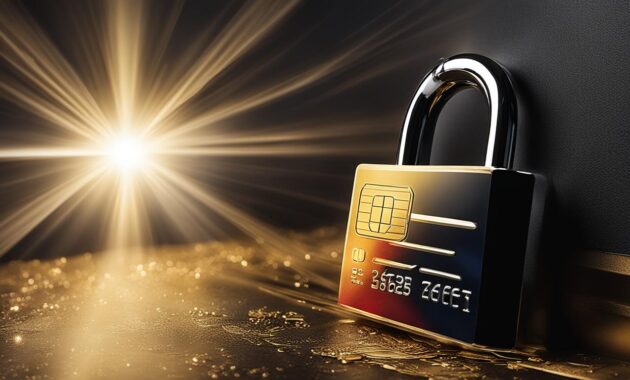
While protecting your card security codes is crucial, there are other best practices you can follow to enhance your credit card security. By implementing the following tips, you can further safeguard your financial information and minimize the risk of fraud:
- Sign your cards: Always remember to sign the back of your credit and debit cards upon receipt. This simple step deters unauthorized use and helps ensure that your card is only used by you.
- Separate your PIN and card: Keep your Personal Identification Number (PIN) separate from your card to eliminate the risk of PIN theft. Memorize your PIN instead of writing it down, and never share it with anyone.
- Monitor your transactions: Regularly review your bank statements and credit card transactions. Verify that the charges are accurate and report any unauthorized activity to your financial institution immediately.
- Handle receipts securely: Safely handle your receipts to prevent sensitive information from falling into the wrong hands. Shred or destroy receipts that contain personal or financial data.
Protect your credit card security with these additional measures:
Incorporating these practices into your daily routine can strengthen your credit card security and provide you with peace of mind when making online or offline transactions.
Remember, safeguarding your financial information is a shared responsibility between you and your financial institution. By staying vigilant and practicing secure card usage, you can minimize the risk of credit card fraud and protect your hard-earned money.
Contacting Financial Institutions and Reporting Fraud

If you suspect fraudulent activity or unauthorized transactions on your credit card, it is crucial to take immediate action and contact your financial institution. Reporting such incidents promptly helps protect your financial security and prevents further damage. Most financial institutions provide dedicated phone lines specifically for reporting unauthorized transactions and suspicious activity.
Keep a record of contact information for all your credit cards in a secure location, such as a password-protected digital document or a locked drawer. This ensures that you have quick access to the necessary details when reporting any potential fraudulent activity. When contacting your financial institution, be prepared to provide specific information about the unauthorized transactions or suspicious incidents, such as the date, time, and details of the transactions.
Reporting potential internet scams and identity theft incidents is not only essential for your own protection but also contributes to the overall efforts in fraud prevention. By reporting such incidents, you assist authorities in identifying patterns and trends, helping them take appropriate actions to combat fraud.
“Reporting fraud promptly is like putting up a roadblock in the path of fraudsters, preventing them from causing further harm and protecting others from falling victim to their schemes.”
Sample Reporting Contact Information:
| Financial Institution | Phone Number |
|---|---|
| Bank of America | 1-800-432-1000 |
| Chase | 1-800-935-9935 |
| Citibank | 1-800-950-5114 |
| Wells Fargo | 1-800-869-3557 |
Remember, reporting unauthorized transactions not only helps safeguard your own finances but also contributes to the prevention and identification of identity theft and fraud. By taking prompt action and reporting any suspicious or fraudulent activity, you play a crucial role in protecting yourself and others.
The security code on a credit card, also known as the CVV number, is a vital three- or four-digit code printed on the back or front of your card, depending on the credit card issuer. It is an additional layer of security that helps protect your credit card information, particularly during online purchases or transactions made over the phone. While the three- or four-digit code is typically located on the back of the card, like the card number, it plays a crucial role in ensuring that only the individual who possesses the card can provide the code.
This security measure is essential in safeguarding against unauthorized use in case the card details are stolen. When making an online or over-the-phone purchase, the need for your credit card security code helps verify your identity and adds an extra level of protection to your credit card account. It is important to note that different card issuers may have variations in the location and format of the security code, with Visa cards having a four-digit code printed on the front. As a precaution, it is advised not to share or store credit card security codes to prevent unauthorized access to your card data.
Also Read : Unlock Success With American Express Business Credit Card
Conclusion
In conclusion, protecting your credit card security code is paramount for safeguarding yourself against fraud and ensuring secure transactions. By understanding the role of card security codes, the limitations they may have, and the constant evolution of fraud prevention technologies, you can make informed choices to enhance the security of your credit card transactions.
Both merchants and consumers have a crucial role to play in fortifying card security. Merchants should operate from secured websites, utilize data encryption, and regularly update their systems to address vulnerabilities. Implementing fraud prevention tools, such as address verification service (AVS) and geolocation, in combination with card security codes, further enhances the security of transactions.
On the other hand, consumers should exercise caution by only providing their card security codes to trusted merchants. They should be mindful of their online presence, avoid sharing their code offline or in public places, and use strong cybersecurity software to protect their financial data. Regularly monitoring bank statements, promptly reporting potential scams, and utilizing data protection tools contribute to an additional layer of defense against credit card fraud.
It is important to remember that protecting your credit card security code is a shared responsibility. By adhering to best practices and practicing secure card usage, you can significantly minimize the risk of fraud and ensure secure transactions. Stay vigilant and continue to prioritize the protection of your credit card security code for a safe and secure financial experience.
FAQs
Q: What is a credit card security code?
A: A credit card security code, also known as CVV or CSC, is a three- or four-digit number located on the back of your card. It is an additional layer of security to protect card information during online or phone transactions.
Q: Where can I find my credit card security code?
A: You can find your credit card security code on the back of your card, usually to the right of the signature strip. Visa, Mastercard, and Discover cards have a three-digit code, while American Express cards have a four-digit code on the front.
Q: Why do I need my credit card security code?
A: You need your credit card security code to verify your identity and protect card information when making online or phone transactions. It helps prevent unauthorized use of your credit card.
Q: Can I provide my credit card security code online or over the phone?
A: Yes, you may need to provide your credit card security code when making purchases online or by phone to complete the transaction and verify your identity.
Q: What should I do if I need to enter my credit card security code but don’t have the card with me?
A: If you need to enter your credit card security code but don’t have the card with you, you should contact the card issuer or merchant for alternative verification methods. Avoid sharing your security code without the card present to protect your card information.
Q: How can I protect my credit card’s security code?
A: You can protect your credit card’s security code by never sharing it with anyone, especially via email or over the phone. Keep your physical card secure and only provide the security code when making legitimate transactions with trusted parties.
Q: Is the credit card security code the same as the credit card number?
A: No, the credit card security code is different from the credit card number. The security code is a three- or four-digit number used for verification, while the credit card number is the primary account number associated with the card.
Q: What does PCI compliance have to do with safeguarding the credit card security code?
A: PCI compliance ensures that businesses follow security standards to protect card information, including the credit card security code. Compliance helps safeguard against data breaches and unauthorized access to card information.
Q: Can I find my credit card security code if I don’t have the physical card?
A: No, for security reasons, you should never try to find your credit card security code without the card present. It is crucial to keep the physical card secure and not attempt to obtain the security code without the card in hand.
Q: What should I do if I suspect unauthorized use of my credit card security code?
A: If you suspect unauthorized use of your credit card security code, you should immediately contact your card issuer to report the issue, request a new card if necessary, and monitor your account for any unauthorized transactions.
Source Links
- https://www.unitusccu.com/faq/can-safeguard-credit-debit-cards-fraud/
- https://chargebacks911.com/card-security-codes/
- https://www.avg.com/en/signal/ccv-safety